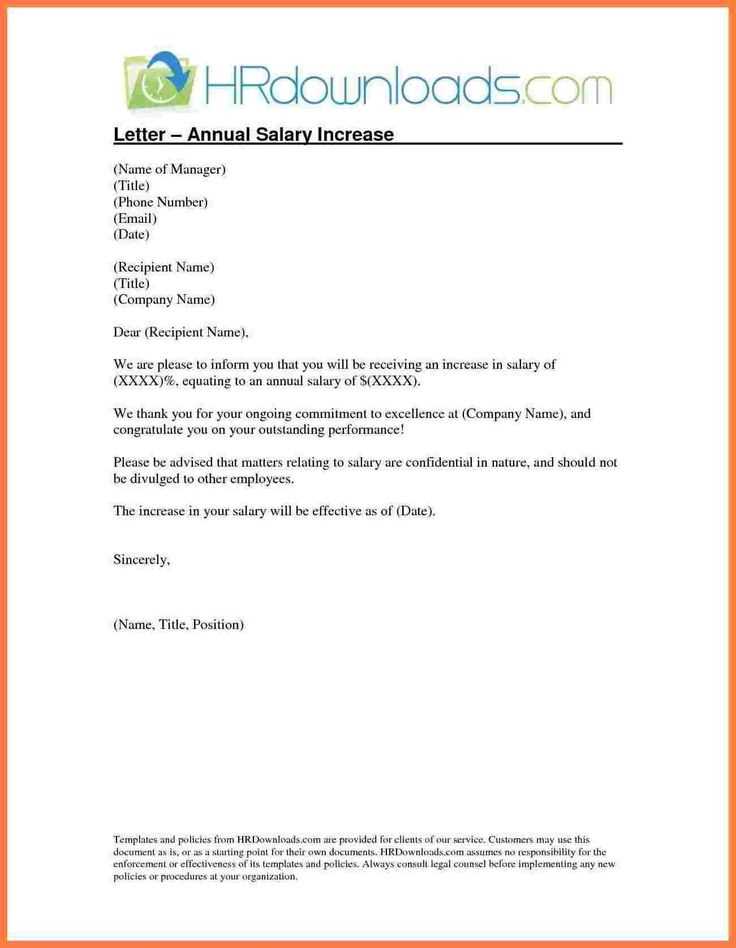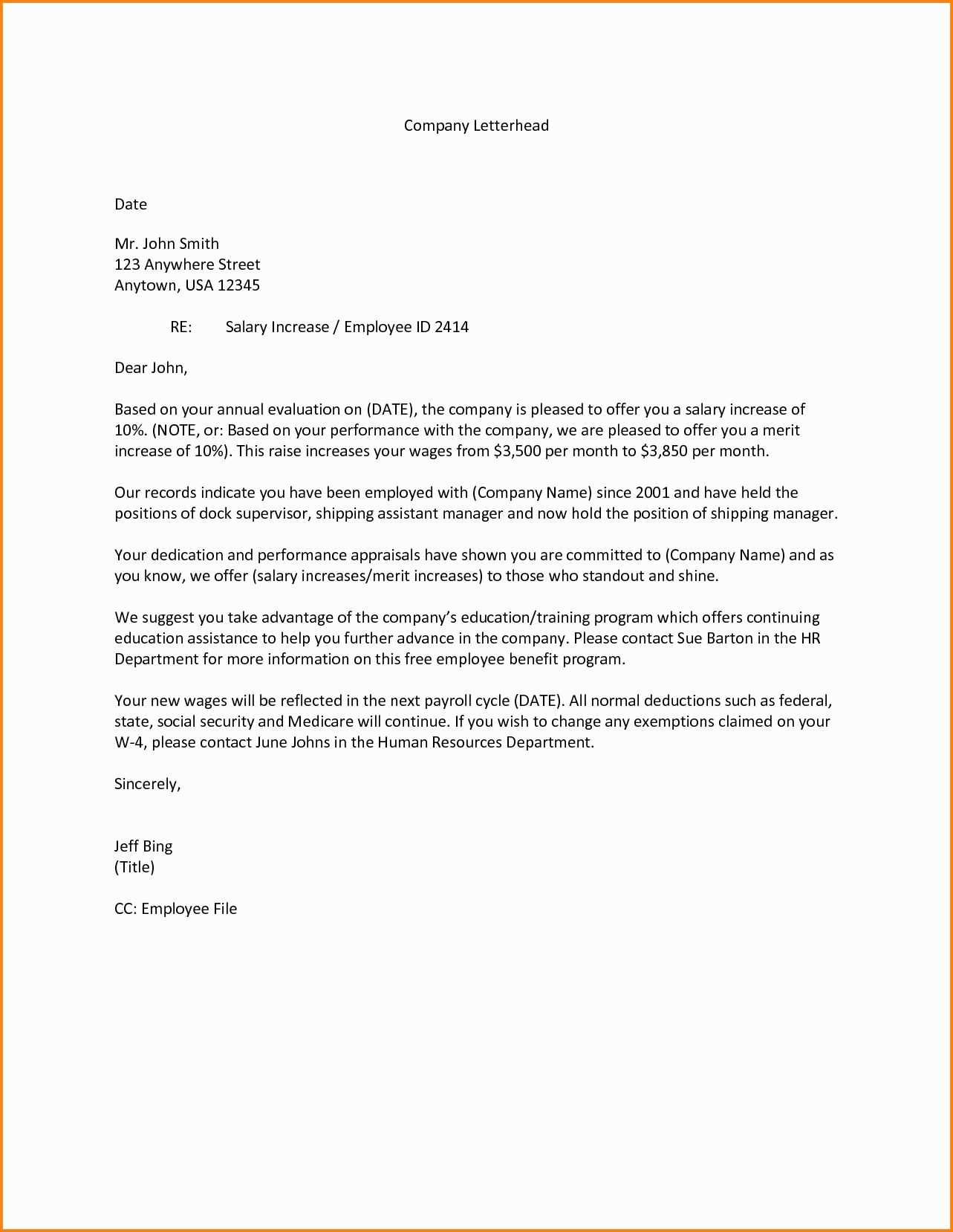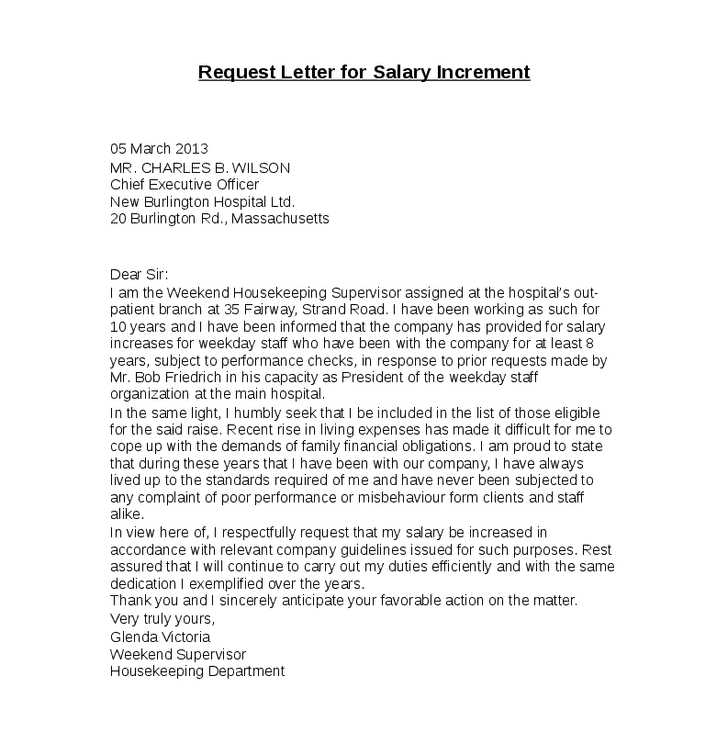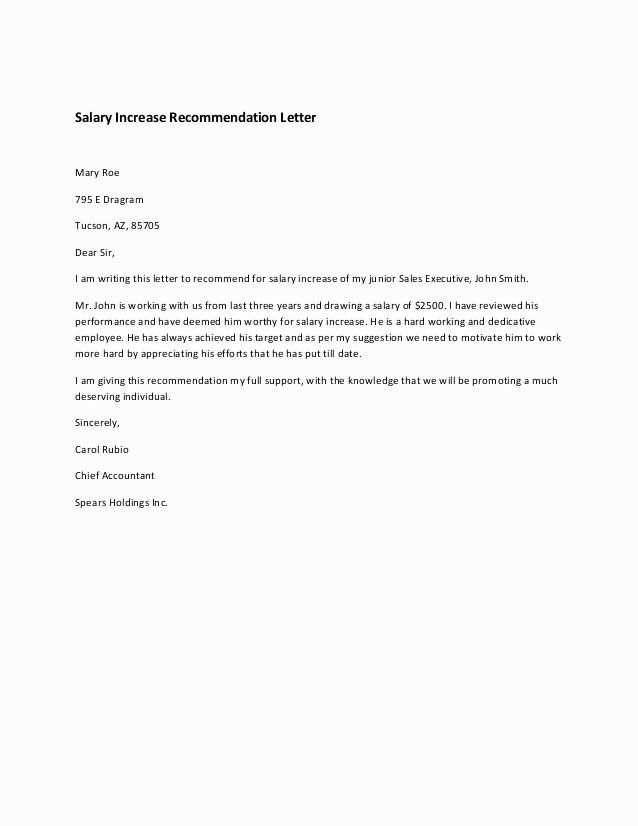Salary Proposal Letter Template for Employers

When seeking a higher payment or a better benefits package, it’s important to communicate your request clearly and professionally. A well-structured request can help you convey your worth and strengthen your position in negotiations. Here’s how to approach this task effectively.
Key Elements of a Strong Request
To make a convincing case, you should include the following components:
- Introduction: Start by clearly stating your purpose for the communication, without being overly direct.
- Justification: Explain why you believe a revision of your compensation is warranted. Highlight your achievements, added responsibilities, and any data that supports your argument.
- Specific Request: Be clear about what you are asking for, whether it’s a higher salary, more benefits, or other forms of compensation.
- Closing: End with a polite and professional tone, expressing your openness to further discussion and negotiation.
Making Your Case with Evidence
Including concrete examples of your contributions to the organization can make a significant difference. Focus on accomplishments that align with the company’s goals, such as increased revenue, improved efficiency, or successful project management.
Be Mindful of Tone and Timing

It’s important to approach this type of conversation at the right time. Avoid doing so during periods of financial uncertainty for the company, or during personal crises. Additionally, ensure your tone remains respectful and confident, rather than demanding.
Example Structure for a Compensation Request

Here is a sample structure that you can adapt to your needs:
- Opening: Politely greet the recipient and state the purpose of your communication.
- Overview of Contributions: Briefly summarize your role and major achievements over the past year or months.
- Justification: Provide the rationale for your request, referencing your skills, accomplishments, and industry standards.
- Direct Request: Clearly ask for the adjustment you are seeking.
- Closing: End by expressing gratitude for their consideration and openness to further discussion.
How to Write a Compensation Request
Understanding the Purpose of a Pay Adjustment Request
Key Elements of an Effective Compensation Revision Request
Best Practices for Pay Negotiation Requests
Common Mistakes in Compensation Revision Requests
How to Tailor Your Request for Employers

When looking to negotiate your earnings or benefits, it is essential to present a well-organized and compelling case. This process involves conveying your value to the company while aligning your request with both personal goals and company standards.
Understanding the purpose behind a request for better compensation is crucial. The goal is to explain the need for a change, whether it’s based on personal performance, industry standards, or additional responsibilities. By being clear about the reasons, you help the recipient understand your expectations and create room for meaningful discussions.
To craft a strong request, certain elements must be included. Start with a clear introduction stating the purpose. Follow up with a detailed explanation of why an adjustment is necessary, backing it up with relevant data or examples. Your request should be direct yet polite, and you must outline precisely what change you are asking for.
Best practices suggest approaching these discussions with confidence, but also with tact. Avoid sounding entitled or demanding. Focus on the value you bring to the company, and always aim for a mutually beneficial resolution. Timing also plays a crucial role; initiate such conversations when the company is in a stable financial situation and when your contributions are fresh and noticeable.
Common mistakes to avoid include being too vague about your request, neglecting to provide supporting evidence, or sounding overly aggressive in your tone. It’s important not to compare your situation directly to others, as every role and company has different compensation structures.
Tailoring your request specifically to your company’s culture and structure can increase the chances of success. Research how similar requests have been handled within your organization and adjust your language and approach accordingly. A proposal that resonates with the company’s values and objectives is more likely to be well-received.